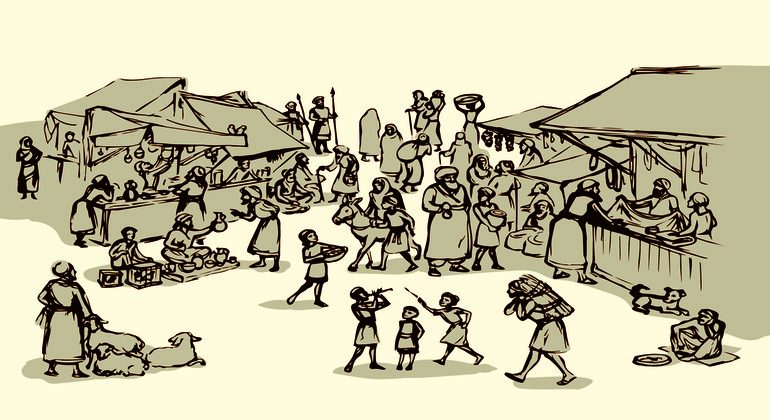Cash Flow Management
Predicting cashflows, more than looking into a crystal ball

Forecasting today is basic Econometrics – this much is known. Yet, the human exists in this process – tinkering with variables and doubting results. As although cash flow forecasting is highly methodological, its predictive nature leaves great room for subjectivity. And it is these spaces that become filled by the maker’s own judgment and flair. This human touch embedded in each step of forecasting is often overshadowed by its more complex and mathematical counterpart. This article, thus, turns the spotlight onto the softer facets of forecasting. Here’s a Modern CFO’s Intuitive Guide to Cash Flow Forecasting.
1. Get creative in sourcing information, become nosy!
Often, as the CFO you will make assumptions when constructing your forecast. While assumptions are crucial to get the model going, solely depending on them can gravely bias your predictions. Hence, after coming up with your initial framework, set it aside and become a fly on the wall. Talk to customers, eavesdrop on sales calls, grab a coffee with your intern. What unexpected information do you come across?
The CFO of a food export company was about to get it all wrong, had it not been for one serendipitous moment. On the commute back home, the driver continued to drone on. However, today instead of plugging in earphones, the CFO continued to listen. The driver expressed with relief that finally truck drivers would remain out of the traffic, as whispers from the grapevine informed of an indefinite trucking strike against rising fuel prices. Shocked with this fact, the CFO realised that this would result in major delays in cash in-flows. Especially since their inventory used trucks to get to ports. But thankfully, the conversation happened in time for the CFO to adjust the forecast for this hindrance. Hence, such coincidental nuggets of information are often the difference between a good and a great forecast. Since these insights are not found inside the 4 walls of a carpeted office, it pays (quite literally!) to be alert even outside.
2. Employ emotions to your strength, cue the violin
When it comes to repetitive tasks such as cash flow forecasting, we often blindly follow protocol. This can result in what we call in lay man’s terms, a ‘Mid-Life Crisis’. Not actively reflecting and analysing such procedural tasks can make them redundant. One CFO curiously escaped such a rut by spending more time with her ageing parents. On her weekly visit back home, the inevitable mealtime bickering revealed the latest source of conflict between the parents. The father was furious with the mother for loaning funds to their house help. The mother defended her action, claiming the well-established relationship she held with the help as collateral enough. While the CFO could see many faults in her mother’s argument, the lightbulb had struck. She realized that trust and pride played an important role in collections, and thus decided to employ it. Starting that Monday, the CFO made an effort to form one-on-one relationships with all her distributors. Soon their payments became more prompt, as now the distributors’ stake in business was not only economic, but also reputational in nature. Therefore, by incorporating emotional intelligence, cash flows became timelier. This subsequently reduced the level of uncertainty in forecasting and made it a more precise tool.
3. Common sense is underestimated, a little goes a long way
A lot of forecasting depends on the context it wishes to predict, both need to be looked at together. As the saying goes, “It takes two to Tango!”. This analogy arises not because we wish pretend that our work is more fun than it actually is, but because there is a strong connection between forecasting and its context. While analysts routinely research on economic, cultural, and political trends, this connection can only be picked up by human experience, a.k.a. common sense. As shocks don’t exactly announce their arrival in newspaper letterings, it requires more delicate thinking to expect the unexpected. The CFO at one FMCG company looks back at 2020. While he tried to adapt his business to the news of a potential pandemic, it was one instinctive comment that helped pre-empt a major disruption. An associate manager mentioned that in such times of crisis individuals often hoarded essentials. What desktop research couldn’t predict, a human who understood and felt fear could. The CFO thankfully corrected the forecast for hikes in demand. Looking back, this adjustment helped extensively protect the company from cash shortages, caused by the higher raw material expenditure. Had it not been for a keen eye to identify a pattern beyond the obvious, the cash shortage would have persisted, and even snowballed into other issues such as late wage payments.
Hopefully by now this article has clarified that approaching forecasting as an art does not mean that we must abandon analytical rigour. All we are saying is that our forecasting efforts need to be holistic – a judicious mix of analytics, and situational awareness. And even then, the best of cashflow forecasts can come to nought without the right payment management program. This is where B2B fintechs like Vayana come in. We offer affordable, accessible, and automated financing programs that are curated to cover every possible layer of your supply chain, right down to the last mile. Thereby ensuring that a large portion of your collections can be put on auto pilot. (You can read more about this here)
Thus, coming back to cash flow forecasting, while one can use coding and digital tools to generate predictions, the role of the human is unmatched. Call it creativity, emotion, or common sense, these are critical ingredients in business. Hence, CFOs need to learn not just the science, but also the art of forecasting.




